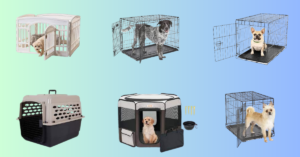In this exploration of the cat litter universe, we delve into the often-overlooked but indispensable aspect of cat care. Join us on a journey beyond the basics, where we unravel the mysteries of cat litter, shedding light on the importance of choosing the right type for both feline satisfaction and owner convenience
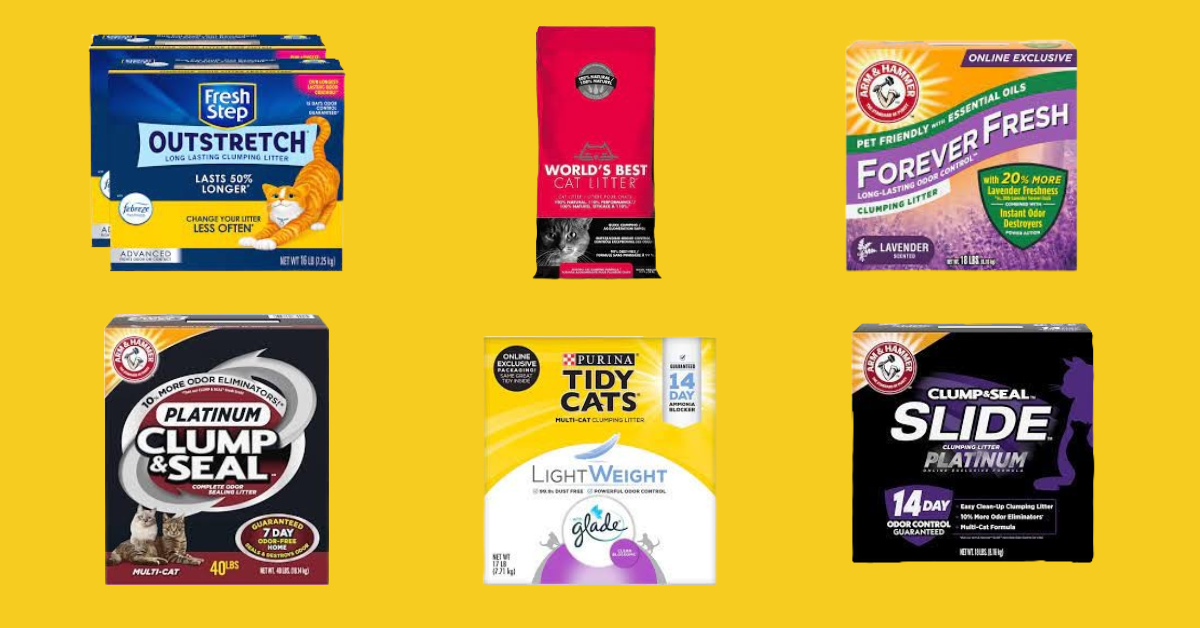
. Whether you’re a seasoned cat owner or a novice feline enthusiast, prepare to discover the nuances of this seemingly mundane necessity that plays a pivotal role in maintaining a happy and healthy home for both you and your cherished feline friend.
List off Cat Litter.
01.Fresh Step Advanced, Unscented Clumping Cat Litter, Extra Large, 37 lbs

02.Fresh Step Advanced Clumping Cat Litter, Outstretch, Extra Large, 32 lbs

03.Dr. Elsey’s Premium Clumping Cat Litter – Ultra – 99.9% Dust-Free, Low Tracking, Hard Clumping,

04.ARM & HAMMER Clump & Seal Platinum Cat Litter, Multi-Cat, 40 lb

05.Arm & Hammer Forever Fresh Clumping Cat Litter Lavender, MultiCat 18lb with 20% More Lavender

06.Boxiecat Pro Deep Clean, Scent Free, Probiotic Clumping Cat Litter – Clay Formula – Cleaner Home

07.WORLD’S BEST CAT LITTER Multiple Cat Unscented, 32-Pounds
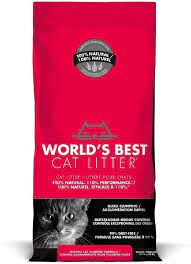
08.Arm Hammer SLIDE Platinum Multi-Cat Easy Clean-Up Clumping Cat Litter, 14 Days
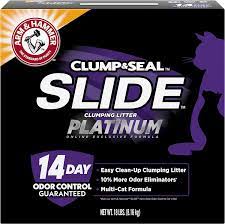
09.Arm & Hammer Clump & Seal Platinum Multi-Cat Complete Odor Sealing Clumping Cat Litter,
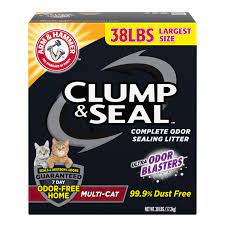

FAQ…
Q: What types of cat litter are available, and how do they differ?
Cat litter comes in various types, each with its unique composition and characteristics. Common types include clumping clay, non-clumping clay, silica gel, recycled paper, and natural/biodegradable options. Clumping clay forms solid clumps when wet, making it easier to scoop waste. Non-clumping clay absorbs liquid but doesn’t form clumps. Silica gel crystals absorb moisture and control odor effectively. Recycled paper and natural/biodegradable litters are eco-friendly alternatives.
Q: How often should I change my cat’s litter?
The frequency of litter changes depends on the type of litter you use, the number of cats you have, and your cat’s preferences. In general, scoop clumping litters daily to remove waste and replenish the litter as needed. Non-clumping litters may require more frequent changes. Be observant of your cat’s behavior and adjust the cleaning schedule accordingly.
Q: What are the benefits of using clumping cat litter?
Clumping cat litter is popular for its convenience. It forms solid clumps when wet, making it easy to scoop out soiled areas while leaving the rest of the litter clean. This helps in maintaining a fresher litter box, controlling odors, and extending the lifespan of the litter.
Q: How do I transition my cat to a new type of cat litter?
Cats can be sensitive to changes in their litter. Gradually introduce the new litter by mixing it with the old one in increasing proportions over several days or weeks. Monitor your cat’s reaction, and if they seem uncomfortable, consider adjusting the transition pace or trying a different type of litter.
Q: Are there any health considerations when choosing cat litter?
Some cats may have sensitivities or allergies to certain litter materials or fragrances. It’s essential to choose a litter that aligns with your cat’s health needs. Additionally, dust-free options can benefit both cats and owners, especially those with respiratory issues.
Q: How can I control litter box odors effectively?
Regular scooping and litter changes are crucial for odor control. Choose a litter with good odor-absorbing properties, and consider placing the litter box in a well-ventilated area. Adding baking soda to the litter or using odor-neutralizing sprays can also help manage unpleasant smells.
Q: Can I flush cat litter down the toilet?
Flushing cat litter down the toilet is not recommended, as it can lead to plumbing issues and environmental concerns. Most cat litters are not biodegradable and may contain harmful substances. Dispose of used litter in a trash bag, following local waste disposal guidelines.

